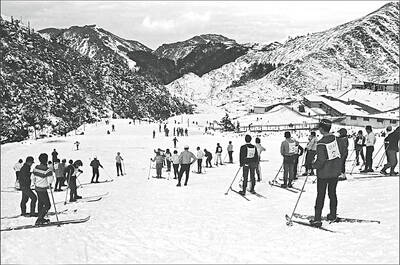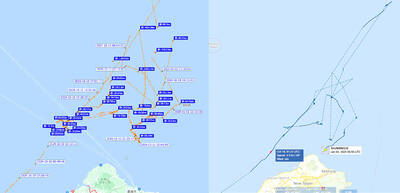Argentine filmmaker Marcos Rodriguez, whose 2016 documentary Arribenos explored the lives of Taiwanese immigrants in Buenos Aires, plans to shoot a sequel in Taiwan.
The Ministry of Culture is reviewing the storyboard — which is to follow immigrants to Argentina on their return to Taiwan — to determine if it qualifies for an international coproduction grant.
Rodriguez said his interest in Taiwanese culture and inspiration for making Arribenos grew out of his admiration for Taiwanese director Hou Hsiao-hsien (侯孝賢) and Taipei-based filmmaker Tsai Ming-liang (蔡明亮).
Rodriguez named the film after the main street that runs through Buenos Aires’ Barrio Chino, or Chinatown, which flourished as a center of Taiwanese culture during a surge in immigration during the 1980s.
Perhaps because of the era in which the immigration took place, the Barrio Chino has a nostalgic, stuck-in-time quality that brings to mind the atmosphere of some of Hou’s classic films, he said.
To prepare for the movie, Rodriguez said he studied Taiwanese culture for a year before spending another year filming in Barrio Chino, capturing holiday gatherings, religious ceremonies and karaoke parties.
Rodriguez said he discovered that a considerable number of Taiwanese immigrants left Argentina during the 2001 financial crisis.
Since then, he has become increasingly curious about what became of them after returning to Taiwan and what memories they had of their time in Argentina, he said.
In coming to Taiwan to make a sequel, Rodriguez hopes to complement the story told in the 2016 documentary, and give a fuller picture of the rich and varied experiences of Taiwanese immigrants, he said.

A strong continental cold air mass and abundant moisture bringing snow to mountains 3,000m and higher over the past few days are a reminder that more than 60 years ago Taiwan had an outdoor ski resort that gradually disappeared in part due to climate change. On Oct. 24, 2021, the National Development Council posted a series of photographs on Facebook recounting the days when Taiwan had a ski resort on Hehuanshan (合歡山) in Nantou County. More than 60 years ago, when developing a branch of the Central Cross-Island Highway, the government discovered that Hehuanshan, with an elevation of more than 3,100m,

Taiwan’s population last year shrank further and births continued to decline to a yearly low, the Ministry of the Interior announced today. The ministry published the 2024 population demographics statistics, highlighting record lows in births and bringing attention to Taiwan’s aging population. The nation’s population last year stood at 23,400,220, a decrease of 20,222 individuals compared to 2023. Last year, there were 134,856 births, representing a crude birth rate of 5.76 per 1,000 people, a slight decline from 2023’s 135,571 births and 5.81 crude birth rate. This decrease of 715 births resulted in a new record low per the ministry’s data. Since 2016, which saw

SECURITY: To protect the nation’s Internet cables, the navy should use buoys marking waters within 50m of them as a restricted zone, a former navy squadron commander said A Chinese cargo ship repeatedly intruded into Taiwan’s contiguous and sovereign waters for three months before allegedly damaging an undersea Internet cable off Kaohsiung, a Liberty Times (sister paper of the Taipei Times) investigation revealed. Using publicly available information, the Liberty Times was able to reconstruct the Shunxing-39’s movements near Taiwan since Double Ten National Day last year. Taiwanese officials did not respond to the freighter’s intrusions until Friday last week, when the ship, registered in Cameroon and Tanzania, turned off its automatic identification system shortly before damage was inflicted to a key cable linking Taiwan to the rest of

China’s newest Type-076 amphibious assault ship has two strengths and weaknesses, wrote a Taiwanese defense expert, adding that further observations of its capabilities are warranted. Jiang Hsin-biao (江炘杓), an assistant researcher at the National Defense and Security Research, made the comments in a report recently published by the institute about the Chinese Communist Party’s (CCP) military and political development. China christened its new assault ship Sichuan in a ceremony on Dec. 27 last year at Shanghai’s Hudong Shipyard, China’s Xinhua news agency reported. “The vessel, described as the world’s largest amphibious assault ship by the [US think tank] Center for Strategic and International